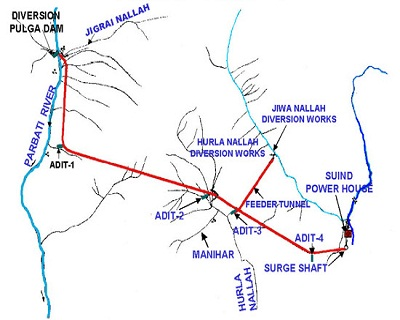



The Pavana River in Maharashtra, flowing through Pune and Pimpri-Chinchwad, is a vital water source, now under pollution mitigation efforts by the National Green Tribunal. Originating in the Western Ghats, it merges with the Mula River. The CPCB, established under the Water Act, 1974, sets and monitors pollution control standards for air, water, and industries.

Disclaimer: Copyright infringement not intended.
The National Green Tribunal's western bench in Pune directed the state-appointed rejuvenation committee to convene a meeting of stakeholders to set a new timeline for implementing the action plan that would tackle pollution in the Pavana River.
Aspect |
Details |
|
Location |
Located in the west of Maharashtra, Pune district, passing through the city of Pune, dividing Pune and Pimpri-Chinchwad region. |
|
Origin |
Originates from the Western Ghats, about 6 km south of Lonavala. |
|
Course |
Flows east initially, turns south, passing through Dehu, Chinchwad, Pimpri, and Dapodi before merging with the Mula River near Pune city. |
|
Confluence |
Mula River joins the Mutha River to form the Mula-Mutha River, which eventually flows into the Bhima River (a major tributary of the Krishna River). |
|
Purpose of Dam |
To ensure sufficient water supply to surrounding areas, providing drinking water to Pune and Pimpri-Chinchwad. |
Aspect |
Details |
|
Establishment |
Established in September 1974 under the Water (Prevention and Control of Pollution) Act, 1974. |
|
Powers and Functions |
Vested with powers under the Air (Prevention and Control of Pollution) Act, 1981. |
|
Role |
Acts as a field formation, providing technical services to the Ministry of Environment and Forests under the Environment (Protection) Act, 1986. |
|
Primary Functions |
1. Promote cleanliness of streams and wells by preventing, controlling, and reducing water pollution. 2. Improve air quality and prevent, control, or reduce air pollution. 3. Advise the Central Government on pollution control. |
|
CPCB Standard Development |
Engaged in developing/revising environmental standards, modernization of COINDS, and creating guidelines for environmental management in industries. |
|
Standards Development Areas |
1. National air quality. 2. Water quality criteria. 3. Standards for emissions/discharges from industries. 4. Biomedical waste disposal by incineration. 5. Emission/noise limits for diesel engines and generator sets. |
|
Minimum National Standards (MINAS) |
Formulates MINAS specific to various industries for discharges (water pollutants), emissions (air pollutants), noise levels, and solid waste. These standards must be adopted by state governments. |
READ ABOUT
Source:
|
PRACTICE QUESTION Q.Consider the following statements regarding a river located in the western part of Maharashtra:
Which of the following rivers is described above? (a) Bhima (b) Pavana (c) Mula (d) Mutha Answer: b Explanation: It is located in the Pune District in the state of Maharashtra. The river is a prominent river that runs through Pune City and separates it from the Pimpri-Chinchwad district. It comes from the Western Ghats, around 6 kilometers south of Lonavala. It is a tributary of the Bhima River that joins the Mula River in Pune. Flowing eastward at first, it turns south and travels through the suburbs of Dehu, Chinchwad, Pimpri, and Dapodi before joining the Mula River. The "Pavana Nagar Dam" is being built on this river at Pavana Nagar. |











© 2025 iasgyan. All right reserved